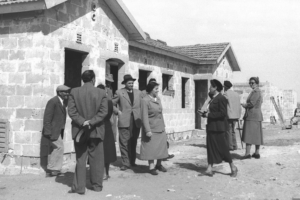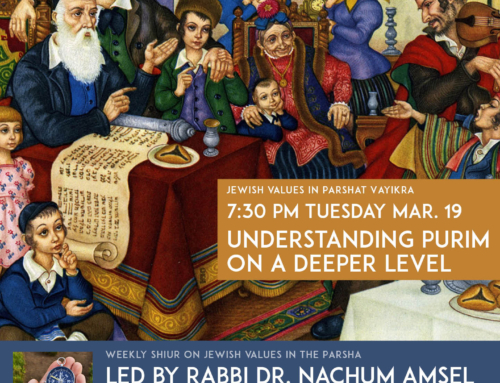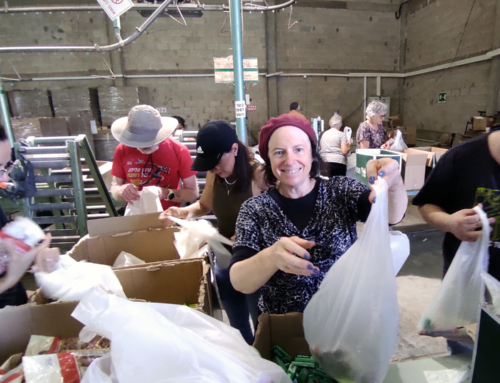The Founding of Modern Ashkelon by David Zwebner
Reviewed by Stephen Epstein
Photos are courtesy of the Government Press Office.
 Four months ago, our family moved to Ashkelon and soon afterward, was gifted a copy of The Founding of Modern Ashkelon by David Zwebner. The book opened up the little-known history of the city and the connection with a Jewish community outside Israel in the early days of the modern state.
Four months ago, our family moved to Ashkelon and soon afterward, was gifted a copy of The Founding of Modern Ashkelon by David Zwebner. The book opened up the little-known history of the city and the connection with a Jewish community outside Israel in the early days of the modern state.
In the preface to the book, Zwebner tells the serendipitous way he came to discover Ashkelon’s connection to South Africa, the country where he grew up. It was 2006 and he was about to take his final exams for his tour guide license and he got called up for miluim (reserve duty with the IDF) in Tarqumia (south of Beit Shemesh). When he finished his miluim, he offered to give a ride to a fellow soldier. The problem was that the soldier lived in Ashkelon, the opposite direction of his home in Jerusalem. Zwebner decided to take the soldier to Ashkelon since he thought it might be beneficial for his upcoming exams, and in Israel, it is was not uncommon to give soldiers rides. When they arrived in Ashkelon, Zwebner had a sense of déjà vu and felt a sense of familiarity with the city. It reminded him of the suburb of Johannesburg where he grew up. And when he got to the Afridar neighborhood, with a street names such as South Africa Blvd, Johannesburg and Kaapstad, he knew there was story there. He later studied at the Ashkelon Academic College and when he talked with his teacher about what he found, Prof Avi Sasson suggested that he write a paper on the South African connection. Zwebner wrote the paper and found so much material, the paper became a book.
The book opens with the ancient history of Ashkelon in a way that is easy to follow. You can tell that Zwebner is familiar with telling the story as a tour guide and takes the readers from the Copper Age circa 5950 BCE to the Bronze Age and the Canaanites who lived here, all the way up to the destruction of the city by the Mamluks in 1250, ending Ashkelon’s uninterrupted 3,250-year history.
Fast forward to the late 15th century when the Ottoman Empire took over and people started to build the village of al-Majdal. During the British Mandate, al-Majdal became a district center and an economic hub, and with it came growth. The British recognized the strategic importance of al-Majdal and it was serviced by the railroad that ran from Gaza to Ashdod, Jerusalem, Jaffa and all the way to Haifa.
During Israel’s War of Independence, al-Majdal was captured by the newly formed IDF and that is where Zwebner’s real story starts.

Minister of Labor Golda Meir (center, left) inspecting new housing for immigrants in the Afridar neighborhood, Ashkelon.
The South African Jewish Appeal (SAJA) raised money to help with the rehabilitation of Holocaust survivors. After the founding of the modern State of Israel, and the realization that many survivors were not returning to rebuild their homes in Europe, a decision was made to help in efforts to settle and integrate them in Israel. The initial commitment was one million Pounds Sterling, which would be worth about $50 million USD today. The final amount that was contributed by South African Jewry ended up being close to double that amount.
Zwebner describes how two representatives of SAJA travelled to Israel and met with Golda Meyerson (before she changed her name to Golda Meir) and came to an agreement to build a new town west of al-Majdal that would be a “decentralized, scientifically planned” garden city for those that escaped the horrors of the Holocaust. The South Africans’ goal was to help European refugees, but the government recognized the needs of immigrants from Middle Eastern countries and added them to the project. The South Africans did not turn anyone away.
Zwebner takes the reader through the agreement the SAJA made with the nascent Israeli government to ensure that the new city would be a success. The country would be responsible for a road leading to the town, open a railway station, bus lines, electrical infrastructure, schools, medical clinics and an industrial area that would employ the new residents.
In order to carry out this mammoth project, SAJA and the South African Zionist Federation (SAZF) set up two non-profit public companies. They were subsidiaries of Amidar, Israel’s state-owned housing company. One was called the Afridar Building and Development Company. The name Afridar was an amalgamation of Africa + Amidar. When the town was built, it was called Afridar and was later amalgamated into the city of Ashkelon. The neighborhood retains the name Afridar today.
The rest of the book describes the different steps that were taken and the back and forth between the South African Jewish community and their partners in Israel. The book highlights the uniqueness of the city and how the South African planners wanted the city to have an unusually large amount of green space, far greater than other Ashkelon neighborhoods that were designed by Israeli planners. Afridar was to allocate 48.5 percent of land for private plots and eventually reserved 48 percent for green public and private spaces. The designers who drew up the original plans called for every single home to have a view of the sea. A walk through Afridar today gives one the feeling of being in a rural village, with abundant parks.
By 1952 the first homes were completed and Zwebner paints a picture of the different steps, with the accompanying pain points, to shore up the new town with a hospital and sources of employment. The early days of the state were difficult times and new immigrants, despite the fact that they lived in a beautiful and well-designed city, were dissatisfied with the lack of services and representation in governance. Additionally, an increase in the amount of Fedayeen, who were infiltrating from Egypt, necessitated an infusion of resources to beef up security. Life in Ashkelon was not idyllic at that time. On the South African side, discord grew between funding organizations and became an issue. After pouring in more money — double of what they had planned — the SAZF and others complained bitterly and demanded that they end their support and hand over the keys to the city to the Israeli government.

Aerial view of new housing (Afridar), Ashkelon
By 1958 the South Africans Jewish community turned the project over to the Israeli government. After almost 10 years, the community had accomplished something that no single Jewish diaspora community had done: designed, planned, financed and built an entire city in Israel.
The second half of the book has background material such as newspaper clippings and photographs. Unfortunately, many of the clippings are hard to read, but the headlines are large enough to get a clear message of what was going on in Ashkelon and South Africa at the time.
Overall, the book is extremely well written and not saddled with the many details that Zwebner must have had to wade through while doing his research. For anyone wanting to know more about Israel’s urban history or anyone involved in raising money for public use, this book is a must-read.





